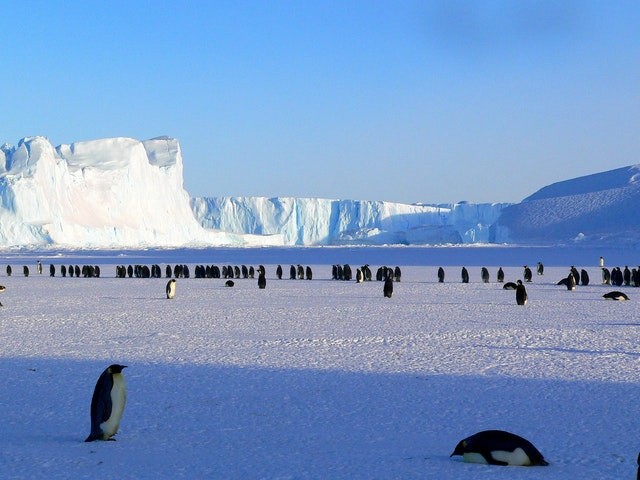
University of Cambridge botanists developed a large-scale map of microscopic algae flourishing along the Antarctic coastline, a first in the sceintific field.
To have comprehensive information about the Antarctic coastline, the first microscopic algae large-scale map was created by the University of Cambridge's botanists in order to check the flora on the species in the region.
Two summers were spent taking at the region measuring and detecting green algae in order to gain sufficient information about the odd phenomenon that is turning Antarctica green. Moreover, the researchers partnered with satellite data for efficient information.
Based on their initial observation, they have discovered that although each individual alga is microscopic in size once turned collective they can transform into snow bright green and visible from space when they grow in mass.
The Algal growth arises as it is enriched by mammal and bird excrement, wherein in the 3.1 miles or five-kilometer radius of a penguin colony, 60 percent of blooms lie.
According to experts, this green snow will expand faster as the global temperature continues to rise due to climate change caused by the activities of man.
Botanist and paper author, Matt Davey of the University of Cambridge shared that it is a significant step forward in further understanding the land-based beings on Antarctica and it might change in the future as the climate warms.
He also added that snow algae play a key role in the continent's ability to catch carbon dioxide from the atmosphere via photosynthesis.
Blooms of green snow algae are abundant in the southern continent region, specifically on the island in the Antarctic Peninsula's west coast.
From the months of November through February, the Algaes grows abundant in warmer areas with a temperature reaching up to or above 0°C (32°F), during the summer of the Southern Hemisphere.
Over the last century, the Antarctic Peninsula is the sole area in the continent that underwent an accelerated warming effect.
Researchers detected that the distribution of the green snow is strongly affected by the animals living in the region, whose ex-crew acts as a highly nutritious indigenous fertilizer.
Based on the observation, Algae were also caught growing near the nesting sites of their birds, including skuas, which is a type of predatory seabird and in the areas wherein seals usually come ashore.
Dr. Davey mentioned that 1,679 separate blooms of green algae have been identified on the snow's surface. This covers an area of at least 1.9 kilometers squared if summed up and equates to a carbon sink of an estimated 479 tonnes every year.
With its current effects, researchers explained that this amount of carbon emitted equates to about 875,000 car travels across the United Kingdom.
Moreover, around 66 percent of the blooms of green algae were located on small, low-lying islands wherein there is no high ground.
However, due to the rising global temperatures especially in the Antarctic Peninsula, these islands someday may lose their snow cover in summer and their snow algae.
On the other hand, blooms can also spread to higher ground as the snow in low-lying melts.
Another botanist at the University of Cambridge Andrew Gray explained that as the Antarctic region warms, he predicts that the total mass of snow algae will add up, and its continued spread to higher ground will exceed the loss of small island patches of algae by a significant number.
Related article: Titanic Telegraphic Machine Will Be Removed from Ship Wreck Soon








